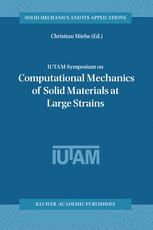

Most ebook files are in PDF format, so you can easily read them using various software such as Foxit Reader or directly on the Google Chrome browser.
Some ebook files are released by publishers in other formats such as .awz, .mobi, .epub, .fb2, etc. You may need to install specific software to read these formats on mobile/PC, such as Calibre.
Please read the tutorial at this link: https://ebookbell.com/faq
We offer FREE conversion to the popular formats you request; however, this may take some time. Therefore, right after payment, please email us, and we will try to provide the service as quickly as possible.
For some exceptional file formats or broken links (if any), please refrain from opening any disputes. Instead, email us first, and we will try to assist within a maximum of 6 hours.
EbookBell Team

4.4
62 reviewsThe steady increase in computational power induces an equally steady increase in the complexity of the engineering models and associated computer codes. This particularly affects the modeling of the mechanical response of materials. Material behavior is nowadays modeled in the strongly nonlinear range by tak ing into account finite strains, complex hysteresis effects, fracture phenomena and multiscale features. Progress in this field is of fundamental importance for many engineering disciplines, especially those concerned with material testing, safety, reliability and serviceability analyses of engineering structures. In recent years many important achievements have been made in the field of the theoretical formulation, the mathematical analysis and the numerical im plementation of deformation processes in solids. Computational methods and simulation techniques today play a central role in advancing the understanding of complex material behavior. Research in the field of "ComputationalMechan ics of Materials" is concerned with the development of mathematical models and numerical solution techniques for the simulation of material response. It is a very broad interdisciplinary field of science with inputs from traditional fields such as Applied Mechanics, Applied Mathematics, Materials Science, Solid State Physics and Information Technology. The intention of the IUTAM Symposium "Computational Mechanics of Solid Materials at Large Strains", held at the University of Stuttgart, Germany, from August 20-24, 200I, was to give a state of the art and a survey about recent developments in this field and to create perspectives for future research trends.